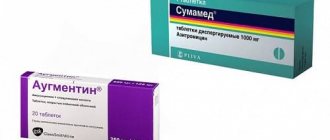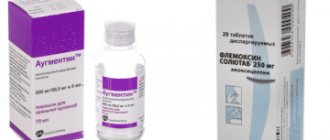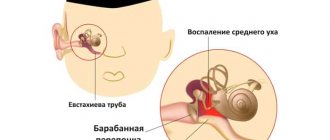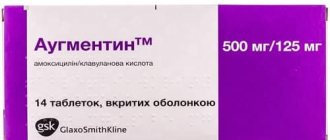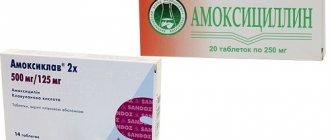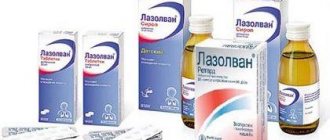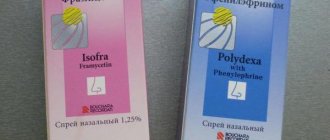Causes
An inflammatory process in the bronchi can be caused by:
- Weakening of the immune system.
- Influenza (an acute viral disease that can affect the upper and lower respiratory tract, is accompanied by severe intoxication and can lead to serious complications and deaths, mainly in elderly patients and children).
- Acute respiratory infections (a group of clinically and morphologically similar acute inflammatory diseases of the respiratory system, the causative agents of which are pneumotropic viruses).
- Adenovirus (an acute pathology caused by an adenovirus, which is manifested by general intoxication of the body, inflammation of the nasopharynx, signs of keratoconjunctivitis, tonsillopharyngitis and mesadenitis).
- Staphylococcus.
- The presence of excessively humid or too cold air indoors or outdoors.
- Sudden temperature changes.
- Radiation, as well as smoke or excessive dust.
- Presence of chemical vapors in the environment.
In addition, bad habits, in particular alcohol abuse and smoking, increase the likelihood of developing the disease. What antibiotic is better to take for bronchitis?
Sumamed and Amoxiclav - different names for the same drug or different medications
The active ingredient of Amoxiclav is amoxicillin, enhanced with clavulanic acid. A penicillin antibiotic ensures the death of bacterial microflora by destroying the cell walls of pathogenic microorganisms. Clavulanic acid creates resistance of drugs from the penicillin group to enzymes produced by bacteria, which allows the drug to be used for the treatment of:
- inflammatory diseases of the ENT organs and respiratory tract;
- skin infections;
- infectious lesions of bone tissue;
- inflammation in the genitourinary system.
The active ingredient of Sumamed is azithromycin. The drug is effective in combating infections of the respiratory system and ENT organs. The drug suppresses the process of synthesis of proteins necessary for the growth and reproduction of pathogenic microflora. The medication is activated at the site of inflammation, remaining inactive in healthy tissues.
Amoxiclav belongs to the class of penicillins, and Sumamed is a macrolide, which provides different effects on the body for similar indications.
Amoxiclav belongs to the class of penicillins.
Similarities
Medicines have a wide spectrum of action and are available in the form of tablets, capsules and powder for preparing a suspension. The components of the medicine can provoke the development of an allergic reaction and disruption of the digestive system. Both drugs require caution when prescribed during pregnancy; they are contraindicated during breastfeeding. The drugs are not prescribed if the patient has hypersensitivity to the substances included in the composition.
What is the difference?
Medicines have different dosage regimens. It is enough to take Macrolide once a day, the recommended course duration is 3-5 days. Amoxiclav is taken three times a day, the duration of therapy is 7-14 days.
Sumamed has an effective effect against intracellular pathogens, which allows the drug to be used for the treatment of chlamydia and other sexually transmitted diseases, but gram-negative bacteria are resistant to its active substance.
Amoxiclav penetrates into all tissues of the body, which expands the range of its use. Side effects of the medication are:
- nausea, diarrhea;
- hepatitis;
- cholestatic jaundice;
- pathogenic activity of fungal microorganisms.
Sumamed can cause disruptions in the functioning of the cardiovascular system, hearing organs and joint pain. The drug is not recommended for use in patients with kidney or liver pathologies. The drug is incompatible with Heparin.
Contraindications to the use of Amoxiclav are liver failure and blood diseases. The drug is incompatible with anticoagulants.
Sumamed can cause disruptions in the functioning of the cardiovascular system, hearing organs and joint pain.
What's stronger?
Both drugs have high antimicrobial activity, but when taking Sumamed, the therapeutic effect is achieved within 3 days, penicillin-based medicine must be taken for a longer period, at least 7 days.
Which is cheaper?
A package with 3 macrolide tablets or 15 Amoxiclav tablets is sold at a price of 335 rubles.
From the above, it is known that the disease can have both viral and bacterial etiology. And if in the first situation the use of antimicrobial drugs is unlikely to influence the course of the disease, then in the second case it will not be possible to recover without them.
In addition, antibiotic therapy for bronchitis in adult patients is recommended to begin when:
- A strong and prolonged increase in temperature (usually if the temperature does not subside for more than three days).
- Increased sedimentation rate of red blood cells in the blood.
- Severely elevated levels of white blood cells.
- Pronounced symptoms of intoxication.
- Heavy breathing.
- Protracted course of the disease.
In addition, medical experts recommend the use of antimicrobial agents for bronchitis for people over sixty years of age. The fact is that over time, the immune system weakens, and the body’s protective functions are no longer able to cope with the pathogen without effective outside help. Subsequently, bronchitis in people of retirement age can lead to various complications, including pneumonia and bronchopneumonia.
Chemical bronchitis also requires antibiotic therapy. This is a type of inflammatory process that is triggered by inhalation of vapors of chemical compounds. This effect often affects the mucous membrane of the respiratory system and causes a bacterial infection.
Antimicrobial drugs are also included in the course of treatment for chronic obstructive bronchitis, which usually affects smokers. An exacerbation of this disease is accompanied by a general deterioration in health, characterized by an increase in body temperature, increased sweating, general weakness, as well as severe coughing attacks, which are accompanied by the release of purulent pathological secretions. This situation can only be changed with the help of antibacterial agents. What antibiotic is best to take for bronchitis?
The best antibiotics for bronchitis and pneumonia, as a rule, include Amoxicillin and Biseptol - cheap drugs that affect a huge number of known pathogens.
Amoxicillin belongs to the group of penicillins. The medicine is produced in tablets, capsules and granules. The drug begins to “work” within thirty minutes after use. Duration of action is approximately six hours.
"Biseptol" refers to sulfonamides and is an inexpensive medicine. Included in combination treatment to eliminate bronchitis and other otorhinolaryngological diseases. Despite all its advantages, it has many restrictions on its use.
In addition, the following names of good antibiotics for bronchitis in adult patients and children have also proven themselves to be positive:
- "Ofloxacin."
- "Flemoxin-Solutab".
- "Augmentin".
- "Sumamed."
- "Cefazolin".
- "Lincomycin."
- "Ceftazidime."
Sumamed and Amoxiclav belong to different groups of antibacterial drugs and there are many differences between them. The active ingredient of Sumamed is azithromycin, an antibiotic from a number of macrolides.
This drug has a pronounced bacteriostatic effect, which is realized by inhibiting protein synthesis in microbial cells. This makes it impossible for them to reproduce further and makes them more sensitive to the body’s protective immune mechanisms.
Amoxiclav consists of the penicillin antibiotic amoxicillin and the penicillinase inhibitor clavulanic acid. This combined bacterial agent has a bactericidal effect on microbes. Amoxicillin is capable of disrupting the integrity of the cell membranes of pathogenic flora, which leads to their death.
Patients often confuse Sumamed and Amoxiclav because of the similar names of the active ingredients, and also because they are prescribed for the same pathologies.
The list of indications for Amoxiclav and Sumamed is largely similar, but there are a number of significant differences. They are due to the fact that azithromycin preparations are more selective for certain types of tissue in which they accumulate. Therefore, Sumamed is primarily used for pathologies of the following tissues and organ systems:
- respiratory tract (bronchitis, pneumonia, laryngitis, pleurisy);
- ENT organs (sinusitis, otitis, pharyngitis, tonsillitis);
- skin (erysipelas, erythema migrans);
- genitourinary system (chlamydia).
Amoxiclav, due to its less selective penetration of amoxicillin and accumulation in body tissues, creates a therapeutic concentration in a large number of organs. Therefore, this antibiotic has a wider scope of use. It can, in addition to the above-mentioned pathologies, be used for bacterial pathologies:
- in dental practice;
- internal female genital organs (vagina, uterus, fallopian tubes, ovaries);
- gallbladder and bile ducts (cholecystitis, cholangitis);
- digestive system (gastritis, duodenitis, enteritis, colitis);
- soft, connective tissues and musculoskeletal system.
This is due to the pharmacological characteristics of antibiotic metabolism. Sumamed has the ability to accumulate in peripheral tissues of the body. It also passes into the focus of inflammation, where its concentration can be 10-30 times higher than the amount of azithromycin in the peripheral blood.
In Amoxiclav, metabolism occurs in a different way. Amoxicillin penetrates body tissues much worse. At the same time, the antibiotic is rapidly eliminated through the kidneys. Therefore, to maintain therapeutic concentrations in the blood, it is necessary to regularly take new doses of the drug.
Typically, the duration of treatment with Sumamed is 2-3 days shorter than with Amoxiclav.
It is impossible to say for sure which is better - Sumamed or Amoxiclav. It all depends on the type and strain of bacterial infection that has affected the patient’s body. However, extensive research has been conducted for about 20 years on the issue of antibiotic resistance of bacteria to these drugs.
In recent years, there has been an increase in the frequency of strains of microorganisms that have become invulnerable to penicillin antibiotics. Resistance to macrolides remains at a relatively low level, which allows them to be actively prescribed if necessary in inpatient or outpatient practice. However, it should be taken into account that these studies were carried out mainly on bacterial pathogens of respiratory tract diseases.
When taking which of these two drugs, side effects are less likely to occur? First, it should be noted that both Sumamed and Amoxiclav belong to the group of antibiotics, when taken, severe side effects with damage to important systems of the patient’s body occur relatively infrequently.
Both drugs are characterized by the development in a fairly large proportion of patients of dyspeptic symptoms (feelings of heaviness in the abdomen, nausea, vomiting, diarrhea) during therapy.
Macrolide analogues with other active ingredients
Erythromycin ®
Similar to penicillin antibiotics. It is active against gram+ and gram-flora, has little effect on most strains of gram-bacteria, fungi and viruses.
With today's huge assortment of medicines on pharmacy shelves, it is often very difficult to make the right choice and purchase an affordable and effective drug. These two factors are key in selecting a remedy for the treatment of any disease. But will a cheap drug help cope with the disease? Is an expensive drug worth its price? Simple analytics and statistics are designed to solve these eternal questions. For example, when treating a bacterial infection, which macrolide antibiotic should you choose: sumamed or azithromycin? After all, they are synonyms, that is, they contain the same active ingredient, but the difference in price is significant. To answer the question correctly, you need to study the properties of each drug and compare them.
Sumamed was synthesized by the Croatian pharmaceutical
and is currently produced under the
TEVA
. Like any European product, it has good recommendations from doctors, who often prescribe it to their patients, especially in childhood.
It contains azithromycin as the active ingredient, as well as a number of excipients. It is used for infectious lesions of various origins and all possible localizations of foci of infection in the body. Available in a variety of dosage forms:
- Capsules.
- Pills.
- Powder for preparing a suspension.
- Powder for the preparation of solution for injection.
All dosage forms are presented in various dosages, so choosing the right treatment regimen for a competent doctor will not be difficult. The drug is very effective and after several days of use there are already signs of positive dynamics.
Like any azalide antibiotic, it can cause various side effects:
- Nausea and vomiting.
- Digestive disorders.
- Allergic manifestations.
- Impaired functioning of the renal system and liver.
This product is produced by domestic pharmaceutical companies and is completely identical in terms of active substance to the drug discussed above, acting as a so-called generic. Like sumamed, azithromycin copes with various infectious diseases:
- Inflammation of the upper respiratory tract (sore throat, laryngitis, sinusitis, frontal sinusitis).
- Inflammation of the lower respiratory tract (pneumonia and bronchitis).
- Infectious skin diseases.
- Infections of the genitourinary system (cervicitis, urethritis).
It also accumulates very quickly in the body, acting within 12-20 hours, which allows it to be used twice a day.
The side effects of azithromycin are similar to sumamed, but in addition to this, in some cases the following negative manifestations were noted:
- Dizziness and headaches.
- Drowsiness.
- Depression or agitation.
- Heart rhythm disturbance.
- Hearing loss.
Which drug is more expensive?
There is a wider range of possible side effects when taking Sumamed, but at the same time they occur sporadically. Since it undergoes metabolism in the liver, it cannot be used for chronic inflammatory and oncological pathologies of this organ. This can lead to the development of chronic functional liver failure.
Sumamed also has the ability to prolong ventricular repolarization, which sometimes leads to the development of cardiac tachyarrhythmias and disruption of the normal rhythm. Therefore, the drug should not be prescribed if there are indirect signs of a tendency to this complication (prolongation of the QT interval on the electrocardiogram).
The most serious side effect that can occur when taking Sumamed is impaired renal function. It has been proven in clinical experiments that the drug reduces the glomerular filtration rate, which leads to an increase in the concentration of creatinine and urea in the blood plasma.
In most cases, these changes are reversible and disappear after the end of therapy, but sometimes they develop into interstitial nephritis.
Thus, side effects are less common when taking Sumamed. But if the patient does not have hypersensitivity to beta-lactam antibiotics, then it is safer to prescribe Amoxiclav.
Azithromycin, which is the active ingredient of Sumamed, penetrates into the bloodstream of the fetus in small quantities, which makes it possible to assume its possible negative effect on it.
Long-term use of the drugs has shown that the incidence of side effects in children does not differ significantly from adults. However, before the first use of Amoxiclav, it is recommended to test for hypersensitivity to the drug.
Manufacturers produce antibiotics in syrup form especially for children. This helps to accurately dose the required amount of the drug, depending on the age and body weight of the child.
Differences
But still, in addition to similar characteristics, the drugs have a number of differences that cannot be ignored. You should analyze the main indicators for each item to find the difference:
- Compound
. The concentration of the active substance in the same release forms is completely the same. It is believed that the difference in composition can only be in accompanying substances, which in sumamed are of higher quality and highly purified. But azithromycin also has all the necessary certificates confirming its quality, so the issue is very controversial. - Usage
. The scope of application of the drugs is completely identical, thus they are completely interchangeable in the pharmacological group. - Side effects
. The side effects of the drugs are similar, but azithromycin, based on statistical data, may have more negative effects on the body. However, the frequency of occurrence of these influences is very low. - Reception during pregnancy
. Despite the fact that the manufacturer claims that sumamed has passed all tests that prove the minimal risk of negative effects on the fetus, it, like azithromycin, is not recommended for use in pregnant women unless the benefit to the mother is greater than the possible risk to the future child. - Release form
. Both drugs are available in various forms, so they can satisfy any patient. The possible difference will only be in the form of tablets or capsules, or in the difference in additional components (measuring spoon or dosing syringe). - Price
. Azithromycin is almost four times cheaper than sumamed in any form of release.
Macrolides
These are the latest generation antibacterial drugs with a reduced risk of adverse reactions that can actively neutralize intracellular pathogenic microflora. Macrolides are one of the best antibiotics for bronchitis and pneumonia.
They prevent the production of proteins in bacterial cells, thereby preventing them from growing and spreading further. However, they do not eliminate pathogens forever, so therapy can take quite a long time.
The best antibiotics for acute bronchitis are:
- Azithromycin.
- "Clarithromycin."
- "Wilprafen".
- "Rovamycin".
- "Erythromycin".
Characteristics of Amoxicillin
The drug belongs to synthetic antimicrobial drugs of the penicillin series. In bacterial cells, the drug destroys the walls, which causes their death.
The drug is almost completely absorbed after oral administration, reaching the highest serum content within 1-2 hours. The active substance is well distributed throughout tissues and organs, without penetrating only through a healthy BBB.
The drug is quickly metabolized to inactive substances, characterized by a short half-life of 90 minutes. Therefore, the medicine is taken every 8 hours.
The product has several forms of release:
- tablets and capsules of 250 and 500 mg;
- granules for oral suspension 50 mg/ml:
- 15% suspension for intramuscular and subcutaneous injections in bottles of 10 and 100 ml.
The medication is taken orally before or after meals. Adults are recommended 1.5 g/day in 3 divided doses. The duration of the course is from 5 to 14 days, which depends on the clinic and the severity of the infection. In some cases, single doses are increased to 1 g. Thus, for the eradication of Helicobacter pylori, 2 g of antibiotic per day is prescribed in 2 doses.
If a patient is allergic to Amoxiclav, can Sumamed be used?
The answer is clear - yes, it is possible. An allergy to Amoxiclav is caused by the body's hypersensitivity to a beta-lactam compound. The latter include penicillins, cephalosporins, monobactams and carbapenems. If there is a history of allergic reactions to any of the drugs in these groups, it is necessary to prescribe another antibiotic with a completely different molecule structure.
According to modern recommendations for the treatment of bacterial pathologies, macrolides are the drugs of choice in this situation. They have absolutely no cross-reactions with penicillins, which makes Sumamed a safe treatment option for patients allergic to Amoxiclav.
Azithromycin, Sumamed
Azithromycin is a semi-synthetic antibiotic, the first representative of the azalide subclass, slightly different in structure from classical macrolides.
The drug Azithromycin is an analogue of Sumamed
. The country of origin of Azithromycin is Russia.
Sumamed is one of the most famous antibiotics
group of macrolides. The active ingredient in this drug is azithromycin. This drug is used to treat the following ailments:
The drug Sumamed originated in the 80s of the 20th century. It was developed in Croatia by pharmacological specialists from the Pliva company.
The main difference between Sumamed and Azithromycin
The main difference between these drugs is that Sumamed is a patented drug
, which has undergone mandatory all clinical trials. Azithromycin is an analog (generic) of Sumamed.
And all analogues are already produced based on research of the original. Hence their price: analogs always have a much lower cost
the cost of patented drugs.
The average price of Sumamed in Russia ranges from 200 rubles per powder, and from 280–1000 rubles per tablet (depending on the concentration). Whereas the average price of Azithromycin tablets, produced in Russia, is only about 100 rubles.
Release form of Sumamed, Azithromycin
Sumamed is available in two forms: tablets and powder. Azithromycin is available in the form of tablets, syrup, and capsules.
The presence of a variety of release forms allows you to more accurately select the dosage of the drug. And syrup and capsules are very convenient to give to children.
Fluoroquinolones
Broad-spectrum antimicrobial drugs. They affect bacteria at the level of their DNA, preventing pathogens from spreading.
But at the same time they have a significant disadvantage - they have a detrimental effect not only on pathogenic, but also on beneficial bacteria, which often leads to dysbacteriosis. Fluoroquinolones are also considered one of the best antibiotics for bronchitis.
Among the drugs in this group, the most famous are:
- "Levofloxacin".
- "Moxifloxacin."
- "Ciprofloxacin."
- "Tsifran".
Cephalosporins
They slow down the connection of components, prevent the formation of cell membranes in bacteria, thereby preventing the spread of microorganisms. These antimicrobial drugs are prescribed both in tablet and injectable form.
The most popular drugs in this series:
- "Suprax".
- "Cefalexin".
- "Ceftriaxone".
- "Cefazolin".
But, despite such a number of drugs, starting to use them on your own without a prescription from a medical specialist is dangerous, since each group has its own specifics.
How to properly take both antibiotics at the same time
These medications are not prescribed at the same time. It is allowed to change medications. The reason may be the lack of a therapeutic effect, deterioration of the patient’s well-being, allergies, etc.
Antibiotics are classified as systemic drugs that act on various systems in the patient’s body. Therefore, you should not self-medicate and take Amoxiclav or Sumamed without a prescription from a qualified doctor.
As practice shows, ignoring this simple rule often leads to the development of complications, side effects and lack of clinical effect from taking the medication.
Evaluation of the effectiveness of antibiotic use is usually carried out 48-72 hours after the start of therapy. Changes in body temperature, general blood count and patient's condition are taken into account. If the dynamics are positive, treatment with the selected drug continues. If there is no desired effect, the antibiotic must be changed.
It is necessary to take the antibiotic at the same time of day to ensure sufficient concentration in the blood. If you miss a dose, you need to take the dose of the drug as quickly as possible, and then continue the course of therapy as usual.
You can take the tablet or syrup of the drug only with plain water. You cannot use soda, dairy products, coffee or strong tea for this purpose, since they can change the processes of absorption and metabolism of the antibiotic, which negatively affects the results of treatment.
This can provoke the development of bacterial resistance to the drug, as well as recurrence of the disease. Only the attending physician has the right to cancel Sumamed or Amoxiclav.
Can Amoxicillin be replaced with Azithromycin?
If Amoxicillin does not give results or resistance to the antibiotic has developed in the treatment of infections of the respiratory tract, lungs or ENT organs, then Azithromycin can replace it. But for some diseases, antibiotics with a predominantly bactericidal effect are chosen as a replacement. For example, in the treatment of pyelonephritis, cephalosporins or fluoroquinolones are recommended. You cannot take a combination of a bacteriostatic macrolide and Amoxicillin, because their effect is reduced. The choice of what to prescribe must be made by a medical specialist.
Although everyone is trying to look after their health and avoid illnesses, people still get sick, and sometimes seriously. And there come times when you simply cannot do without antibiotic therapy.
Antibiotics help to quickly overcome illnesses, help speed up the healing process after surgery, and prevent harmful microbes from developing in the human body.
Antibiotics are antimicrobial drugs
, used to treat infections caused by fungal microorganisms and bacteria.
Antibiotics either prevent the spread (reproduction) of harmful bacteria and microorganisms (bacteriostatic) or contribute to their death (bactericidal).
There are several types of antibiotics. Each group acts against a specific type of bacteria:
- macrolides;
- penicillins;
- cephalosporins;
- tetracyclines;
- chloramphenicol;
- fluoroquinolones;
- sulfonamides;
- aminoglycosides;
- metronidazole;
- enteroseptics, uroseptics.
Antibiotics of the macrolide group
(Clarithromycin, Sumamed or Azithromycin, Vilprafen, etc.) - have a bacteriostatic effect, the ability to penetrate into infected cells, which leads to their destruction. This group of antibiotics is used to treat infectious diseases of the ENT organs (inflammation of the inner ear, pharyngitis), chlamydia, toxoplasmosis, and fungal infections.
Penicillins - antibiotics
bactericidal action, which destroy the membrane of bacteria, which contributes to their death. Penicillins can be used against many bacteria: streptococci, staphylococci, meningitis pathogens, etc.
They are often used for diseases of the respiratory system
and ENT organs: pneumonia, tracheobronchitis, tonsillitis, etc. Examples of penicillins: Amoxicillin, Augmentin, Azlocillin.
Cephalosporins
These are also bactericidal antibiotics that eliminate bacteria. Cephalosporins are divided into 5 groups (generations):
Tetracyclines (Unidox, Doxycycline, etc.) - are used to treat mycoplasmosis, chlamydia, cholera, syphilis, typhus, etc. These drugs belong to the bacteriostatic group.
Levomycetin - used for typhoid fever, meningitis, brucellosis and other infectious diseases. Refers to drugs with a wide spectrum of effects
.
Fluoroquinolones ( Levofloxacin, Ofloxacin
etc.) - used for infections of the ENT organs, respiratory organs, and urinary tract. These antibiotics disrupt the synthesis of bacteria, which leads to their death.
Sulfonamides ( Streptotsid, Biseptol
etc.) - antibiotics with a bacteriostatic effect. They are used for diseases of the digestive system, urinary tract, infections of the lungs and ENT organs.
Aminoglycosides (Gentamicin, Amikacin, etc.) - used in the treatment of urinary tract infections
(pyelonephritis, urethritis), in the treatment of furunculosis and similar diseases.
Metronidazole (Trichopol, Klion, Metrogyl, Flagyl - depending on the trade name) is an antibacterial drug used to treat giardiasis, trichomoniasis, pneumonia
, acute bronchitis, etc.
Enteroseptics - for the treatment of the digestive tract
: Enterofuril, Enterol, etc. - very effective for diarrhea.
Uroseptics (Furadonin, Trimethoprim, Furazolidone, etc.) - used for diseases of the urinary system
: kidney, cystitis, urethritis.
Duration of therapy
It is definitely impossible to say which antibiotic is more effective or better for bronchitis, since different forms of bronchitis require the use of different medications.
It is impossible to determine the source of the disease from the first signs of acute inflammation in the bronchi. Therefore, antibacterial drugs, as a rule, are not used on the first day of illness.
After everything becomes clear about the cause of the inflammatory process in the bronchi, for acute bronchitis in adult patients, the doctor may prescribe medications of the penicillin group or macrolides.
In chronic bronchitis, antibacterial drugs are used much more often than in the acute course of the disease. The same medicinal groups show the greatest effectiveness in this course of the disease.
Patient reviews of Amoxiclav and Sumamed
“Sumamed and Amoxiclav, as far as I know, are widely used to treat bacterial infections of various organs and systems. They have worked well for a long time.
But I’m most interested in what is prescribed first for angina - Sumamed or Amoxiclav? What is the difference between these antibacterial drugs? Why do different doctors give preference to Amoxiclav for certain pathologies, and Sumamed for others?”
Sumamed or Amoxiclav are broad-spectrum antibacterial agents active against gram-positive and gram-negative microorganisms. They are prescribed empirically or after studying the sensitivity of the pathogen to these antibiotics.
Belongs to inhibitor-protected semi-synthetic antibacterial beta-lactam drugs. It consists of the penicillin antibiotic amoxicillin and clavulanic acid, an inhibitor of microbial beta-lactamase enzymes.
Sumamed or Amoxiclav are broad-spectrum antibacterial agents active against gram-positive and gram-negative microorganisms.
Amoxiclav exhibits a bactericidal effect by inhibiting the synthesis of microorganism cell wall components. Peptidoglycan ceases to be created, which leads to the death of the bacterium. Clavulanic acid protects amoxicillin from destruction by beta-lactamase enzymes and expands the spectrum of action of the antibiotic.
Amoxiclav affects both gram-positive and gram-negative microorganisms. Kills streptococci (including viridans), staphylococci (including
aureus), corynebacteria - diphtheria bacillus, spore-forming Bacillus subtilis, the causative agent of anthrax. Active against enterococci, enterobacter, listeria, nocardia, pathogenic Escherichia coli, Pfeiffer bacillus.
It acts on the main pathogens of intestinal infections - dysentery bacillus, salmonella, yersinia, vibrio cholerae.
Amoxiclav is used to treat peptic ulcers, ENT infections, enterococcal cystitis, odontogenic infections, bronchitis, pneumonia caused by Haemophilus influenzae, cholecystitis, peritonitis, Lyme disease, osteomyelitis.
Pharmacokinetics
Bioavailability after oral administration is 70%, maximum when the drug is taken at the beginning of a meal. Completely absorbed in the intestines. The maximum concentration is reached one hour after administration. The binding to plasma proteins is 18-25%.
Both active ingredients are well distributed throughout hard and soft tissues. Penetrate through the blood-brain barrier during inflamed meninges (meningitis), into the placenta and breast milk.
The antibiotic with the inhibitor is excreted primarily by the kidneys, 60% unchanged. 10% of amoxicillin leaves the body in the form of a metabolite - penicillic acid. Clavulanic acid is excreted both unchanged and in the form of an inactive metabolite through the kidneys and intestines.
Side effects: nausea, vomiting, bile reflux, diarrhea, flatulence, black tongue, liver failure, cholestasis, allergic rash, anaphylactic shock, Quincke's edema, pseudomembranous colitis, decreased number of leukocytes, platelets, interstitial nephritis.
Description of Sumamed
Bacteriostatic antibacterial drug of the macrolide class (azithromycin). Suppresses the formation of protein on bacterial ribosomes, inhibiting the reproduction and growth of pathogenic microorganisms. In large doses it kills them.
It has an effect on gram-positive microorganisms - streptococci, staphylococci, bacteroides, clostridium perfringens, enterococci. Effective against gram-negative microbes - fusobacteria, the causative agent of gonorrhea, meningitis, borreliosis, against Haemophilus influenzae and legionella. Penetrates inside the cell, acting on chlamydia, mycoplasma, ureaplasma.
Prescribed for infectious and inflammatory processes of the genital area (prostatitis, urethritis, endometritis, vaginitis), Reiter's syndrome, mycoplasma pneumonia.
Amoxiclav is an antibacterial drug that exhibits a bactericidal effect, since azithromycin acts bacteriostatically. Penicillins do not act against mycobacteria or intracellular infections (mycoplasmas). Azithromycin is active against them. Amoxiclav can lead to the formation of wallless L-forms of bacteria and chronic infection.
Azithromycin retains its therapeutic concentration much longer, so its administration lasts less.
If Amoxiclav is intolerant, it is replaced with azithromycin.
The price for 3 tablets of Sumamed 500 mg is 382 rubles, amoxiclav costs 243 rubles. for 15 tablets.
Azithromycin is a newer antibiotic, so the spectrum of antimicrobial activity is much wider than that of inhibitor-protected penicillins, and includes mycoplasmas and chlamydia.
The effectiveness of the drug depends on the status of the patient.
For children
It is preferable to take azithromycin, since the duration of its use is much shorter than penicillins.
Azithromycin is preferred, but both antibiotics are used only when the risk of infection in the mother outweighs the risk to the fetus.
If you experience any side effects from taking these antibiotics, you should immediately contact your medical staff or your doctor.
At the same time, it is necessary to understand that their presence in itself is not an absolute indication for discontinuation of the drug.
Dyspeptic symptoms, headaches, a slight increase in the concentration of creatinine or liver enzymes in the blood plasma can be not only a consequence of taking the medication, but also the bacterial pathology itself. If their occurrence is due precisely to the use of antibiotics, then in almost all cases these symptoms quickly disappear after the end of the course of therapy.
Albina, 34 years old, Irkutsk
Sumamed was prescribed to a child for the treatment of bronchitis. They took the antibiotic for only 5 days. The cough went away quickly, but then we struggled with diarrhea and poor appetite for another week.
Olga, 52 years old, Reutov
I took a course of Amoxiclav for otitis media. The medicine acts quickly, already on the 2nd day the pain subsided, but the therapy lasted 1 week. I didn't notice any side effects.
Amoxiclav is a broad-spectrum antibiotic. Contains semisynthetic penicillin amoxicillin and β-lactamase inhibitor clavulanic acid. The drug is produced in the form of tablets (2 types: dispersible and film-coated), powder for obtaining a suspension and powder for preparing a solution for intravenous administration.
The drug is prescribed to patients for diseases that were caused by microorganisms sensitive to β-lactam drugs. Amoxiclav can be prescribed for:
- bronchitis;
- cystitis;
- infectious dermatitis;
- pneumonia;
- urethritis;
- infectious gynecological diseases;
- otitis, etc.
Characteristics of Azithromycin
An antibiotic from the macrolide group blocks the synthesis of bacterial proteins in a wide range of microorganisms, disrupting the growth of their colonies. In large doses it causes rapid death of pathogenic flora. The active substance is resistant to acids and, as a result, is not destroyed when passing through the stomach. But food slows down absorption, so the medication is taken 1 hour before or 2 hours after meals.
Within 2-3 hours after oral administration, the medicine produces its therapeutic effect.
The antibiotic is distributed predominantly in the respiratory tract, skin, and subcutaneous fat. The ability to penetrate purulent foci with the help of phagocytes enhances the antimicrobial effect, and the frequency of undesirable manifestations is reduced. There are various available forms of the product:
- coated tablets or capsules of 250 mg No. 6 or 500 mg No. 3;
- powder for oral suspension 20 or 40 mg/ml;
- lyophilisate 500 mg in bottles for the preparation of infusion solution.
For adults, the antimicrobial agent is prescribed 0.5 g once a day, for children - 10 mg per 1 kg of weight daily. For skin, respiratory, and ear diseases, the medicine is taken in courses of 3 days. Due to prolonged elimination, the antibacterial effect lasts up to 1 week. Sometimes the course is extended to 6 days.
Special treatment regimens:
- for infectious urethritis or mild cervicitis - 1 g once (course - 1 day);
- for the erythemal form of tick-borne borreliosis - 1 g on the first day, then 0.5 g until the fifth day;
- for acne - 6 g for 10 weeks of treatment: 3 days in the first week, 0.5 g, then 0.5 g on the first day of subsequent weeks.
For pneumonia and gynecological pathology of an infectious nature, medication infusions of 0.5 g may be prescribed for 2-5 days with mandatory continuation of therapy orally in the same doses. Duration of therapy is from 7 to 10 days.
"Ofloxacin"
The active component of the drug inhibits the enzyme of bacterial cells DNA gyrase, which accelerates the supercoiling reaction of deoxyribonucleic acid. "Ofloxacin" refers to antibacterial drugs with a wide spectrum of effects.
After consuming the drug, the active ingredient is instantly and completely absorbed from the intestinal lumen into the bloodstream. It spreads evenly throughout all tissues of the body. The medication is partially exchanged in the liver.
Ofloxacin is excreted mainly in urine, usually unchanged. The half-life varies from four to seven hours.
Before starting therapy, you must carefully read the instructions for the medicine. There are a number of specific guidelines that you need to pay attention to:
- The medication does not help eliminate pneumonia, which is caused by pneumococcus, and acute tonsillitis.
- During medication therapy, avoid exposure to the sun or ultraviolet radiation on the skin.
- You should not use Ofloxacin for more than two months.
- If pseudomembranous enterocolitis occurs, the medication should be stopped.
- During use of the drug, an inflammatory process of tendons and ligaments may occur, followed by their rupture.
- When using the medication, women should not use tampons during menstruation due to the increased risk of thrush caused by opportunistic fungal flora.
Contraindications:
- Increased sensitivity to the active component.
- Epilepsy.
- Children under 18 years of age.
- Pregnancy.
- Lactation.
The doctor will tell you which antibiotic is best to take for chronic bronchitis.
"Flemoxin-Solutab"
The drug belongs to the group of broad-spectrum penicillin antibiotics.
Patients who are prone to allergies to medications must undergo a sensitivity test before starting treatment with Flemoxin-Solutab. The medication is not prescribed to people who have previously had severe negative effects on penicillin.
"Flemoxin-Solutab" is the best antibiotic for chronic bronchitis, which is most often prescribed by doctors. The course must be completed to the end. Interruption of therapy ahead of schedule can lead to the emergence of pathogen resistance to Amoxicillin, leading to the transition of the disease to the chronic stage.
In this case, the doctor prescribes the patient another, more powerful antibacterial medication. You should not use the drug for more than two weeks, since in this situation the likelihood of superinfection and exacerbation of all signs of the disease increases. If there is no pharmacological effect of the medicine, you should consult a doctor to clarify the diagnosis and adjust the prescribed therapy.
Restrictions:
- liver diseases;
- kidney damage;
- age of children under 12 years old;
- individual intolerance;
- pregnancy in the first trimester.
Comparison of Amoxicillin and Azithromycin
Bacteria sensitive to penicillin antibiotics include:
- coccal flora, including gonococci and meningococci;
- coli;
- Protea mirabilis;
- hemophilus influenzae;
- spirochetes;
- some types of Salmonella, Shigella and Klebsiella;
- Helicobacter pylori.
Azithromycin is destructive to these same microorganisms, but is distinguished by its ability to penetrate into bacterial cells, so its spectrum of activity includes intracellular pathogens:
- chlamydia;
- ureaplasma;
- mycoplasma.
Indications and contraindications for use
Medicines are always prescribed to eliminate the infection. Due to the similarity in the spectrum of antibacterial activity, some indications for the drugs are the same:
- diseases of the ENT organs: sore throat, pharyngitis, tonsillitis, rhinitis, otitis media, sinusitis, laryngitis;
- infections of the bronchopulmonary system: tracheitis, bronchitis, pneumonia;
- cutaneous and subcutaneous lesions of an infectious nature;
- inflammatory lesions of the prostate, urethra, bladder;
- eradication of Helicobacter pylori.
But Amoxicillin penetrates into all tissues, therefore it is used in the treatment of infections of bones, joints, abdominal organs, such as intestinal infections, pyelonephritis, peritonitis, cholecystitis, endometritis, etc. In turn, Azithromycin has an advantage in the treatment of diseases caused by intracellular infection, for example chlamydial urethritis, when beta-lactams do not work. Macrolide is effective against bacteria that synthesize lactamase, that is, resistant to the influence of penicillins.
Both drugs are prohibited for use if intolerance reactions to the active substances have been identified in the past, as well as to drugs from their groups - macrolides or beta-lactams.
Amoxicillin should also not be prescribed for infectious mononucleosis. For Azithromycin, severe insufficiency of liver or kidney function is included in the list of conditions dangerous for use.
In childhood, Amoxicillin has an advantage, because it can be used from birth. And macrolide is allowed in the form of a suspension only from 6 months, in other versions of the oral form - from 12 years, and in infusion form - from 16 years.
Use during pregnancy is permissible for both drugs, provided there is a predominant benefit to the mother. During lactation, it is advisable to interrupt breastfeeding, regardless of the antibiotic used. But Amoxicillin is considered safer.
Side effects and overdose
Adverse reactions from the use of many antibiotics, including macrolides and penicillins, include the development of symptoms such as:
- manifestations of intolerance or allergy reactions: rash, itching, urticaria, Quincke's edema, anaphylaxis, rhinorrhea, conjunctivitis, bronchospasm, eosinophilia, etc.;
- digestive system disorders: nausea, vomiting, diarrhea, flatulence, hypertransaminasemia, pseudomembranous colitis;
- psychoneurological symptoms: dizziness, cephalgia, anxiety, weakness, drowsiness and insomnia;
- cardiovascular disorders: palpitations, tachycardia;
- inflammation of the kidney parenchyma;
- candidiasis of the oral or vaginal mucosa, intestinal dysbiosis;
- sensitization to UV radiation.
But the macrolide has registered undesirable manifestations different from Amoxicillin:
- more severe liver damage (up to necrosis and death);
- tinnitus, reversible hearing loss up to deafness;
- prolongation of the QT interval.
In turn, the penicillin antibiotic caused the development of the following symptoms in some patients:
- pain in the anus;
- inflammation of the oral mucosa;
- dysgeusia;
- reduction in the number of blood cells: leukocytes, neutrophils, erythrocytes, platelets.
In most cases, an overdose of drugs results in gastrointestinal disorders: nausea, vomiting, diarrhea. To relieve these symptoms, the stomach is washed, sorbents and symptomatic drugs are used.
"Augmentin"
The tablets are a long-acting drug, which significantly distinguishes them from other amoxicillin-based drugs. With the help of which the medication can be used to eliminate the source of pneumonia that is resistant to penicillins. The powder for preparing the suspension is prescribed to children over two years of age. The drug exhibits increased activity in the fight against diseases.
After penetration, the active components of the drug, amoxicillin and clavulanic acid, instantly dissolve and are absorbed into the stomach and intestines. The drug has its maximum pharmacological effect in a situation where the patient takes the tablet before meals.
Amoxicillin can pass into milk. According to medical research, particles of clavulanic acid were identified in it. This medication is usually not recommended for therapy in women during lactation. According to reviews, the best antibiotic for bronchitis in children is Augmentin powder.
- Individual intolerance to penicillins and cephalosporins.
- Increased sensitivity.
- Severe disorders of the liver and kidneys.
- Children under two years of age.
- Infectious mononucleosis (an acute viral disease characterized by fever, damage to the pharynx, lymph nodes, liver, spleen and peculiar changes in blood composition).
"Cefazolin"
The drug is available in powder form for the preparation of a solution for injection. Persons who have a medical history of allergic reactions to drugs of the penicillin group should consult a medical specialist before starting treatment with Cefazolin. As a rule, such people have increased sensitivity to cephalosporins.
Patients with chronic lesions of the gastrointestinal tract, especially with colitis, must consult a doctor before starting treatment. During injection therapy, it is necessary to carefully monitor the patient’s health condition; if signs of colitis appear, you should immediately stop taking the medication.
With proper dosage, Cefazolin does not have a suppressive effect on the functioning of the central nervous system and does not slow down the speed of psychomotor reactions.
Restrictions:
- pregnancy;
- individual intolerance to substances;
- severe allergic reactions to cephalosporins;
- severe kidney damage;
- severe liver disease;
- patients up to six months old.
So what should you choose?
There is no clear answer to the question posed. Most likely, when choosing a drug, you need to be guided by your doctor’s prescriptions, and also make a choice taking into account your health and financial condition. After all, in terms of effectiveness, the drugs are completely identical and the choice will depend only on their differences. So for whom is the drug sumamed indicated:
- People of all ages who have inflammatory diseases of various localizations, and who have nervous system disorders, migraines, and hearing impairments.
- Patients with ear inflammation (otitis).
- Children with no history of allergic reactions.
- Patients who can afford to purchase expensive medication and complete the entire course of treatment.
Azithromycin will be the drug of choice for the following groups of people:
- Patients of all ages who, when taking various medications, in particular antibiotics, do not experience any adverse reactions, in particular allergic ones.
- Children with allergic reactions to sumamed.
- Patients whose financial condition does not allow them to purchase branded brands (pensioners, people with low incomes).
With a cough or sore throat, it is sometimes necessary to take antibiotics. Doctors often prescribe Amoxicillin or Azithromycin, which fight a similar infection but have a different mechanism of action.
"Lincomycin"
What antibiotic is best to take for bronchitis? "Lincomycin" is produced in the form of capsules and injections. The medicine has an antimicrobial effect against bacteria that are sensitive to it. It is also used to eliminate infectious and inflammatory diseases of the respiratory system, as well as the musculoskeletal and ENT systems.
It belongs to the antibacterial agents of the lincosamide group. The range of effects lies in the ability to provoke inhibition of the production of bacterial proteins by binding to the ribosome.
The effectiveness of "Lincomycin" is manifested in relation to:
- staphylococci;
- streptococci;
- pneumococci;
- Corynebacterium diphtheria;
- clostridia;
- bacteroides;
- mycoplasma.
The antimicrobial drug actively acts on bacteria that are resistant to other antibiotics. Enterococci, as well as gram-negative bacteria, fungi, viruses and protozoa, do not show sensitivity to it. "Lincomycin" can be purchased at pharmacies strictly according to your prescription.
Prohibitions on taking the drug:
- increased sensitivity to the components of the drug;
- severe liver or kidney disorders;
- the child is less than one month old.
"Ceftazidime"
People intolerant to penicillin antibacterial agents may react poorly to injections, so before treatment you need to make sure there are no allergic manifestations to the medication.
Ceftazidime therapy is not recommended to be stopped until the end of the course of treatment, even if the person feels much better and the signs of the disease have disappeared. This can lead to the emergence of resistance of the source of the disease to the remedy, causing the disease to become chronic.
During injections, patients are advised to avoid drinking alcohol, as this increases the likelihood of toxic damage to the kidneys and liver.
When prescribing the drug to people with severe kidney damage or chronic renal failure, it is necessary to carefully monitor the functioning of the organ. If there is a slight deterioration in health, antimicrobial therapy should be stopped immediately.
When using the medicine intravenously, the patient may experience dizziness and drowsiness, so during therapy it is necessary to refrain from driving vehicles and operating equipment that requires increased attention.
Contraindications:
- pregnancy first trimester;
- individual intolerance to substances;
- severe liver and kidney diseases;
- allergic manifestations to antibiotics of the penicillin group.


